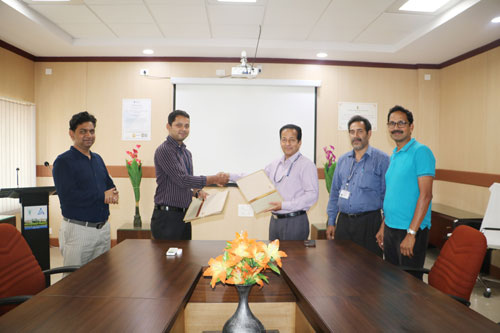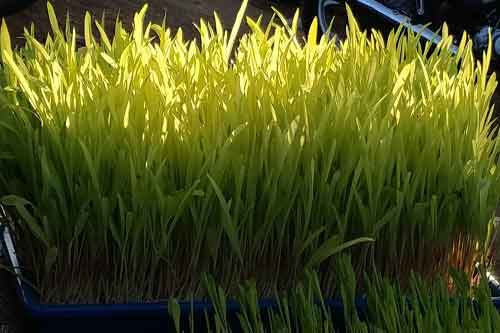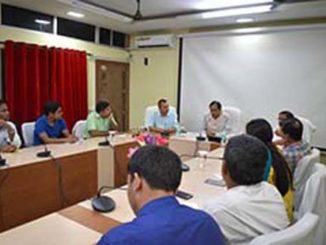Designed by Bengaluru-based agritech startup Hydrogreens, Kambala is helping solve the acute fodder crisis across India. The founders are Mr. Vasanth Kamath and Jeevan M. While working as a Director of Innovations at a popular retail chain, Vasanth, a Civil Engineer, learnt about the fodder shortage problem in India. Upon a little in-depth survey, he realized that the problem is relevant to hundreds of farmers across India, and all of them are eager to solve the crisis at minimal expense, shares Vasanth.

An avid enthusiast of agriculture, Vasanth decided to explore the domain further and contribute to a sustainable solution. He quit his job and set out on a countrywide journey to observe the on-ground situation. For two years, Vasanth interacted with small and marginal dairy farmers and landholders in Karnataka, Kerala, Andhra Pradesh, Gujarat, Rajasthan, and Odisha. He noted the constraints farmers face like altering climate, recurring droughts, and the consequent economic turmoil at the grassroots level. “In fact, the government has issued several advisories and came up with projects like fodder banks in the past few years, after the drought scenario intensified. However, the ground-level implementation of these programmes across India will take more time. Meanwhile, the farmers with cattle are struggling to make ends meet and feed their cows and buffaloes,” informs Vasanth.

How A Kambala Works
While brainstorming for a feasible solution, Vasanth thought along the lines of hydroponics, since he had seen many farmers turning towards this method for better fodder production. “But what was lacking was a sachet model that would work for a small, marginal farmer and individual families. That is why we came up with Kambala,” he informs. The design was patented by Hydrogreens in 2019. The product can be compared to the structure of a large refrigerator, occupying 3 by 4 feet of ground space, and standing 7 feet tall. Inside, racks are installed for growing fodder — 7 racks for 7 days of the week. Each rack comprises four trays where approximately 700 gms of high-protein seeds of maize are added one day a week. Alternately, seeds of wheat or barley can also be used. Within the next few days, the rack becomes covered with fresh, green fodder ready to be dispensed to the cattle. The insides of the racks are connected with 14 micro-sprinklers which spray water occasionally according to the need, once the system is connected to a power source. In a day, 25-30 kg of fodder is generated in a Kambala machine, thereby creating enough fodder for at least 4-5 cows in a week. The water requirement by Kambala is minimal, around 50 litres for 3 days, compared to around 70-100 litres of water required to grow just 1 kg of fodder in traditional field cultivation. The saved water can be redirected to farmlands through drip irrigation and similar methods. The Kambala is also enveloped with a black net cover from the outside, thereby protecting the growing fodder from excessive heat while allowing ample ventilation. This allowed the system to be installed in areas with high daytime temperatures like interior villages of Rajasthan. Priced at Rs 30,000, each Kambala generates an electricity bill of less than Rs 70 in a year. The founders have also commissioned a solar-powered version of the machine, which is priced at Rs 45,000 at present. Around 41 units of the solar Kambala is being installed in Anantapur district of Andhra Pradesh, and several other units are already active in Rajasthan, Gujarat and Karnataka. In total, Hydrogreens have installed around 130 Kambala units all over India and benefitted hundreds of farming families.

Mr. Vasanth Kamath and Jeevan M attended a rigorous course on cattle and fodder growth at ICAR-National Institute of Animal Nutrition and Physiology, Bangalore before establishing Hydrogreens in January 2019. From understanding the problems of farmers in fragmented lands to coordinating with the rural dairy cooperatives — the duo came a long way before officially registering their company. ICAR – National Institute of Animal Nutrition and Physiology, Bangalore signed a memorandum of understanding with M/s Hydrogreens agri solutions Pvt. Limited, Bangalore on 5th February, 2019 as per the guidelines of Agrinnovate India for a joint R & D program to standardize the key operational parameters like seed density, watering schedule and minimization of mold infestation etc., for an economical model of hydroponic grain sprouts production unit. The MoU was signed by Dr Raghavendra Bhatta, Director on behalf of ICAR-NIANP and Mr. Vasanth Kamath for M/s Hydrogreens agri solutions Pvt. Ltd. The outcome of this joint program helped in economical hydroponic fodder production to meet green fodder deficit during adverse weather conditions for better livestock productivity. Fodder grown in the Kambala machine has been found to increase milk production by around 2 litres per cattle and saved around 15-20 per cent of a farmer’s expense on fodder farming.

Restoring a Farmer’s Lost Income
“Vasanth and Jeevan helped me install a Kambala at my home. Now, the entire community of small farmers like us is benefitting from the fodder generated from just one machine,” says Pukraj Jaipal, a farmer and social worker associated with NGO Urmul in Rajasthan. “The machine is very convenient to operate and gives fodder multiple times than what we used to procure from farming. The quality of the fodder is also better, which boosts milk production in cattle,” he adds. Pukraj has also taken up the responsibility of demonstrating the benefits of Kambala among his fellow villagers, many of whom have decided to install the machine at their home. “Overall, a Kambala is aimed to restore 15-20 per cent of the farmer’s income from dairy which becomes lost in inputs for traditional fodder production.
Community Fodder Stations
Presently, Hydrogreens is engaged in setting up around 25 community fodder stations in Chitradurga district of Karnataka. These are small commercial units, in each of which a Kambala has been commissioned under the patronage of local agricultural non-profits. Dairy farmers and villagers with cattle can come up to the station every morning and buy the required amount of high-protein fodder for their cattle. The founders have also received requests of wheatgrass juice and other edible products from Kambala fodder — which is another aspect they wish to explore in these community fodder stations. They are also planning to grow nutrient-rich ragi, millets etc. along with maize, wheat and barley as fresh fodder.

Making India Fodder-secure
The duo zeroed upon the name ‘Kambala’ after the blankets (kambala in Kannada) carried by farmers who spend their days in the field. This blanket serves as a bed for them in the middle of a tiring day, or as a warm wraparound in cold winter mornings. The ‘Kambala’ remains an unfailing companion of the lonely farmer toiling in his field. Hydrogreens have attempted to incite a similar feeling for a farmer with their innovation. “The idea is to make farming communities in India fodder secure,” says Vasanth, adding that the product will help foster more farm-based microentrepreneurs in the rural demography of India.






1 Trackback / Pingback